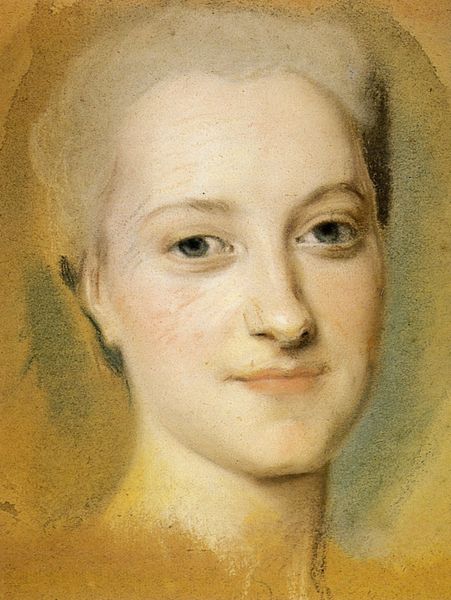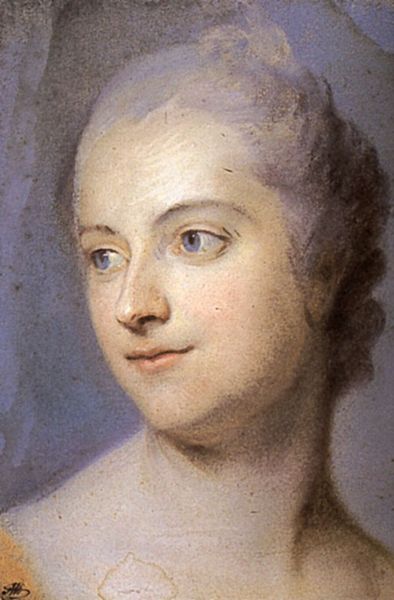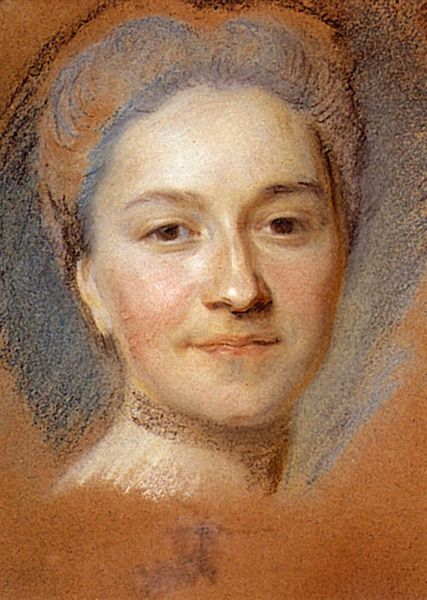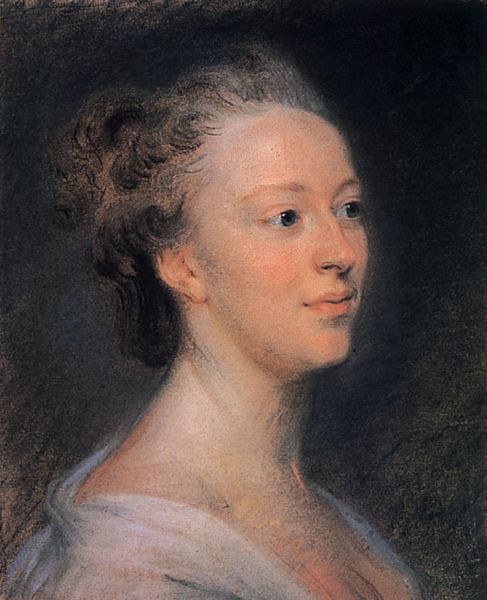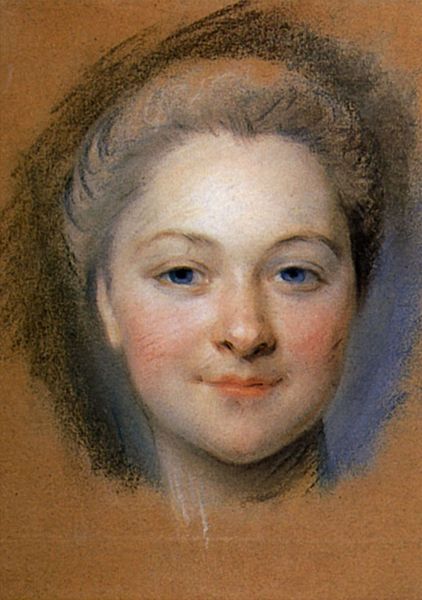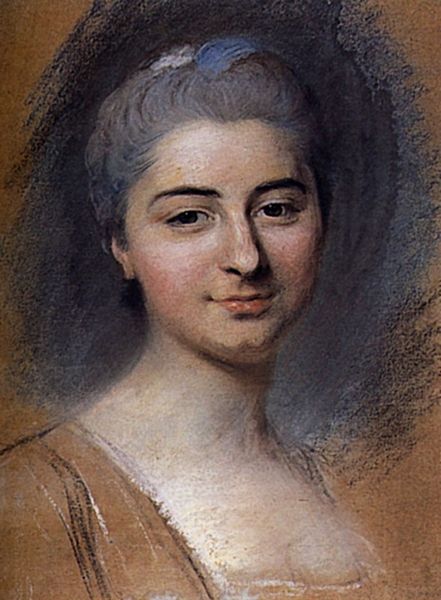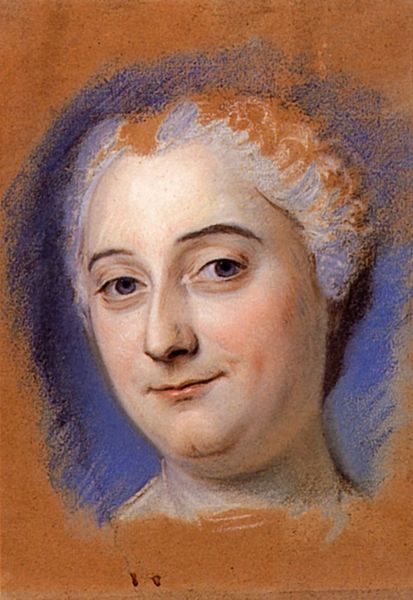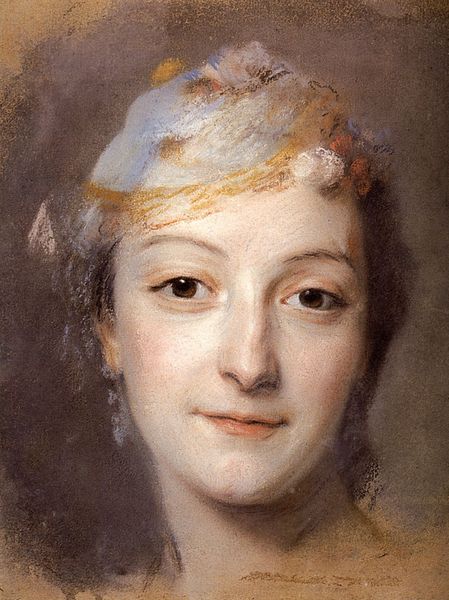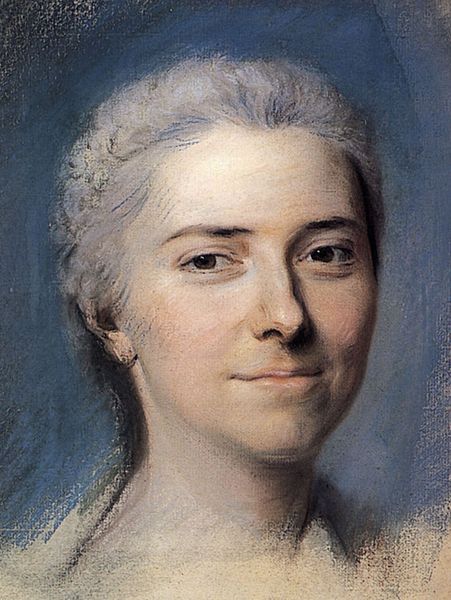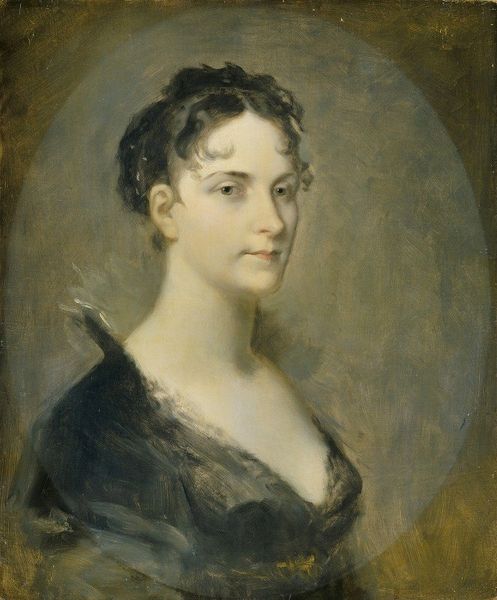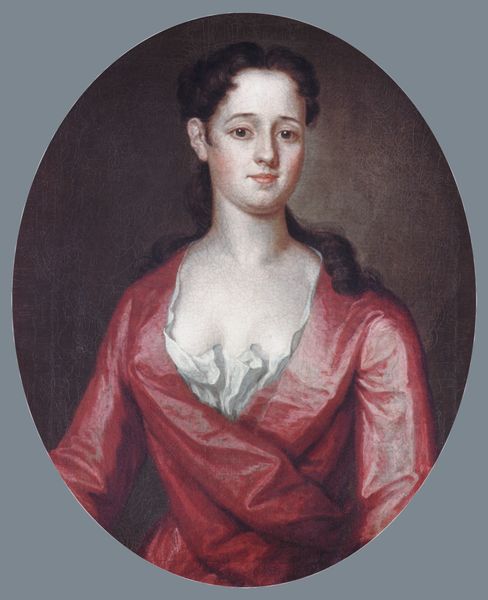
drawing, pastel
#
portrait
#
drawing
#
head
#
face
#
portrait drawing
#
pastel
#
portrait art
#
rococo
Copyright: Public domain
Editor: This is a portrait drawing of Marie Josephe of Saxony by Maurice Quentin de La Tour. It’s done in pastel and focuses solely on her head and shoulders. She has such a serene expression. How do you interpret this work? Curator: Looking at this portrait, I’m drawn to the nuances of power embedded within its creation. It's more than just a likeness. Think about the Rococo era—an era of aristocratic excess but also of emerging feminist salons. Consider Marie Josephe’s role within that court. How much agency did she truly possess in dictating her own image, her representation? Or was she, to some extent, a figurehead, a symbol utilized by a patriarchal structure? Editor: That’s interesting. I hadn’t considered the power dynamics. It does seem like there is some attempt to convey personality in her expression, rather than just idealised beauty. Curator: Exactly. La Tour’s pastel technique itself, known for its delicacy and softness, becomes another layer. It can be seen as reflecting the perceived feminine ideal, but it also hints at the fragile nature of power itself. The lack of detailed setting also shifts the focus, almost aggressively, onto her. Is that focusing empowering, or another form of confinement? Editor: I think I assumed the soft style was simply conventional, but now I can see it might speak to contemporary attitudes around gender. So by leaving out the details, is La Tour subtly questioning her social role? Curator: Perhaps. Art always exists within, and comments on, a social framework. Think about how representation can be both limiting and liberating, even at the same time. Editor: I've certainly never thought about a pastel portrait in that way before! I’m definitely going to look at art with a different lens now. Curator: Precisely! And it's about using all of these approaches—historical context, feminist theory, materials analysis—to create multiple perspectives.
Comments
No comments
Be the first to comment and join the conversation on the ultimate creative platform.
